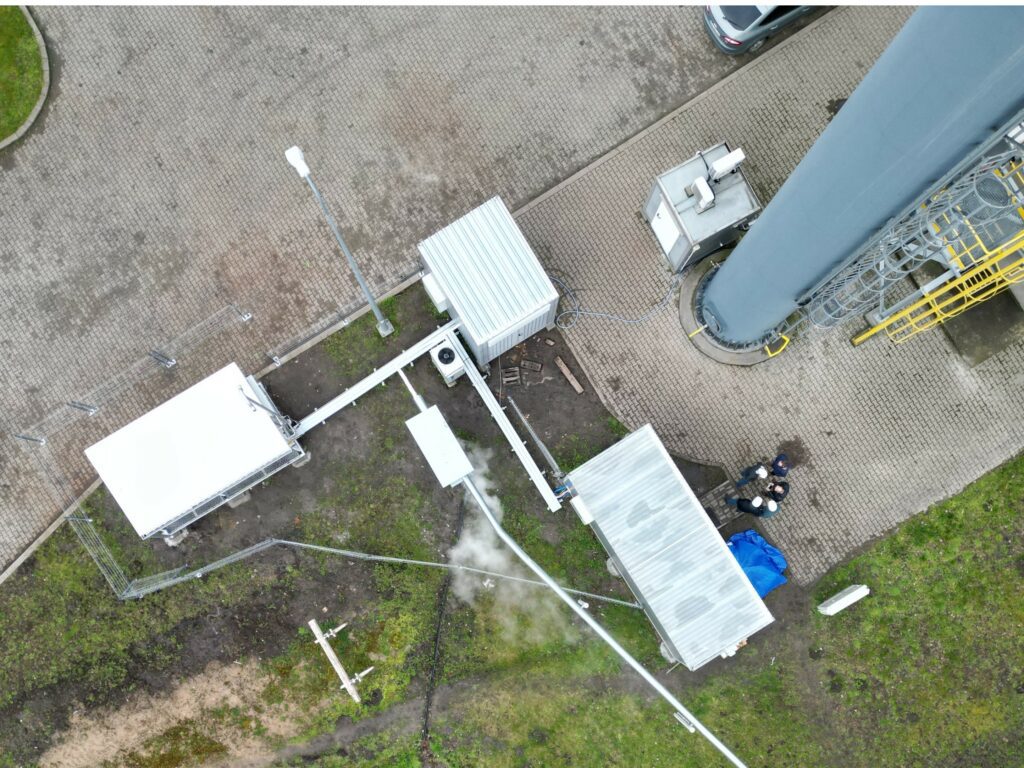Connected Valley case: the potential of stacks of solid oxide cells in sustainable production of power and hydrogen

Solid Oxide Cell (SOC) stacks are electrochemical devices that allow the generation of electricity or hydrogen, depending on the working mode, as solid oxide fuel cells (SOFC) or electrolyzers (SOE), respectively. Technology, developed and advanced at the Institute of Power Engineering – National Research Institute in Poland, is one of the key components enabling the establishment of a hydrogen economy, contributing to the decarbonization of various industrial sectors. The stack design and the accompanying technologies were named the Polish Product of the Future and are recognized with numerous awards. Currently, the technology is supported by the Green Technologies Accelerator GreenEvo.
Innovating with SOC Technology: Advancements and Applications
The electrochemical processes occurring in SOC stacks enable bidirectional energy conversion. SOC stack can operate as a steam electrolyzer (SOE), splitting water into hydrogen and oxygen. The SOC can undergo the reverse process, converting hydrogen into electricity and heat (in fuel cell mode, Solid Oxide Fuel Cell – SOFC). Moreover, numerous other fuels, such as ammonia, carbon monoxide, natural gas, biogas, and DME, can fuel SOFC. This functionality makes SOC stacks a significant component of energy storage systems and clean hydrogen production, offering great potential for coupling with renewable energy sources and processes oriented at synthetic fuel production. These solutions have already been demonstrated in the first installations designed, built, and operated by the team at IEn-NRI. The flagship and first-of-a-kind units is the HYDROGIN installation, which was integrated with the Combined Heat and Power Plant in Elbląg, which ENERGA, ORLEN operates. In November 2023, in Jasło, also in collaboration with ORLEN, the VETNI installation with a 30 kW-class SOE started operation. Currently, the efforts in ongoing projects are focused on 400 kW units intended for replication in 5 MW class installations.
The modular construction of SOC stacks refers to their design, which is based on stacked repeating components that form modules assembled into towers and subsequently into arrays of towers. This allows for power scaling (in SOFC mode) or producing more hydrogen (in SOEC mode), enabling optimal utilization in various applications, from electricity generation to energy storage and clean hydrogen production.

IEn SOC stack
Pioneering Projects and Future Prospects
Solid Oxide Cell stacks offer inherently high efficiency of converting electrical energy to chemical energy and vice versa, allowing effective energy utilization. They are versatile, enabling hydrogen production and energy storage and finding applications in transportation, renewable energy, and industry. Moreover, they are environmentally friendly, minimizing the emission of harmful substances, primarily when powered by electricity from renewable sources. Additionally, SOC cells can be used to store energy in the form of hydrogen, serving as a means of electric energy storage. SOC stacks can be used as a power source in hydrogen-powered vehicles, providing an environmentally friendly solution in transportation.
SOC stacks, operating as electrolyzers, reduce the energy input needed for hydrogen production by at least 15-25% compared to low-temperature electrolyzers such as PEM or alkaline. Additionally, SOE can replace carbon-intensive steam reforming of methane in order to significantly reduce the carbon footprint of hydrogen production to zero, provided that the electrical energy comes from renewable sources such as wind or solar. These advantages make stacks of solid oxide cells a game changer that supports the transition toward sustainable energy production and a potential key player in the future of energy and mobility. As Polish local content, SOC stacks are presented on the international stage through numerous projects and demonstrators contribute to the development of the hydrogen economy based on domestic solutions produced and continuously improved in Poland.
Publisher: Institute of Power Engineering – National Research Institute (https://ien.com.pl/en/)
Materials: Ewa Andruszków, Dolnośląska Dolina Wodorowa (Lower Silesian Hydrogen Valley Association)